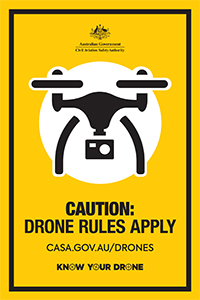In Australia, a Remote Operator Certificate (ReOC) is issued by the Civil Aviation Safety Authority (CASA). They authorizes a business or individual to conduct commercial operations using Remotely Piloted Aircraft Systems (RPAS), such as drones. This page outlines the ReOC privileges that operators have and sets out the ReOC limitations within which they must operate to ensure safety and compliance.
ReOC Privileges for Holders:
-
Commercial Operations:
- ReOC holders are permitted to legally operate RPAS for commercial purposes, such as aerial photography, surveying, agriculture, infrastructure inspection, and delivery services. This is a huge one of the many ReOC Privileges.
-
Flying Near People:
- Another one of the ReOC Privileges is that depending on the operator’s approved procedures, ReOC holders are allowed to operate closer to people and property than what’s allowed under standard operating conditions. This is provided safety measures are in place. A ReOC Holder may operate a RPA 15 Meters to people provided you have their consent.
-
Night Operations:
- One of the big ReOC Privileges is that ReOC holders can conduct night operations. Operators are not typically permitted under standard operating rules.
ReOC Limitations for Holders:
-
Compliance with CASA Regulations:
- All operations must adhere to the Civil Aviation Safety Regulations (CASR) Part 101. This includes maintaining safe distances, altitude limits, and weather conditions for drone flights.
-
Maintaining Visual Line of Sight (VLOS):
- Unless approved for BVLOS, the ReOC holder must always maintain VLOS with the drone during operations. This means the drone must be visible to the operator at all times without the aid of visual enhancement devices.
-
Restricted Areas and Prohibited Airspace:
- ReOC holders are not permitted to fly in restricted or prohibited airspace unless they have explicit permission from the controlling authority.
-
Weight and Size Limits:
- The certificate may impose weight and size limitations on the RPAS that can be operated, and operators must adhere to these limits.
-
Operations Near Airports:
- Operations near aerodromes or airports are restricted, and flights are not permitted within 3 nautical miles of an aerodrome unless specific approvals are granted.
-
Privacy and Safety Considerations:
- ReOC holders must respect privacy laws and ensure they do not cause nuisance or danger to people, property, or other aircraft the ReOC privileges does not allow for no rules to be followed.
- Record-Keeping Requirements:
-
- ReOC holders are required to maintain detailed records of all operations, including flight logs, maintenance records, and incident reports for a minimum of 7 years this is the same for all commercial operators and is neither a type of ReOC Privileges or Limitation.
Key Responsibilities:
- The ReOC holder must have a Chief Remote Pilot (CRP). They are responsible for ensuring all operations are conducted safely and in compliance with CASA regulations.
- The operator must regularly review and update their operations manual to reflect any changes in procedures, safety protocols, or regulations.

